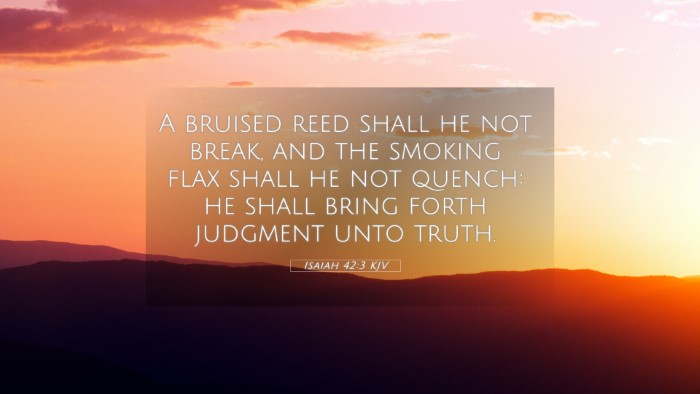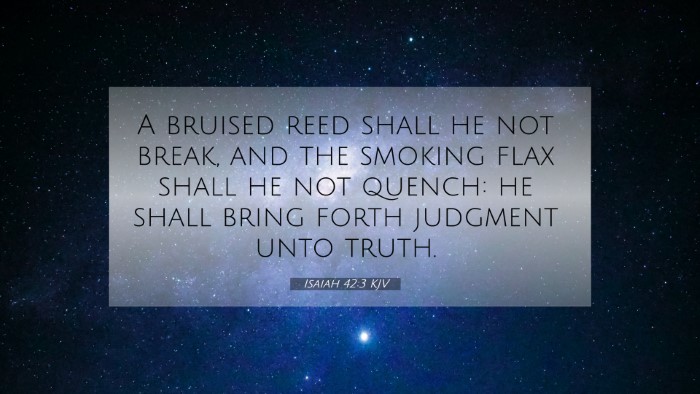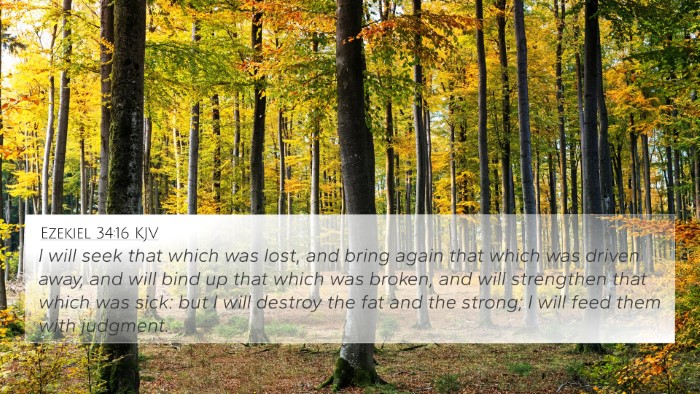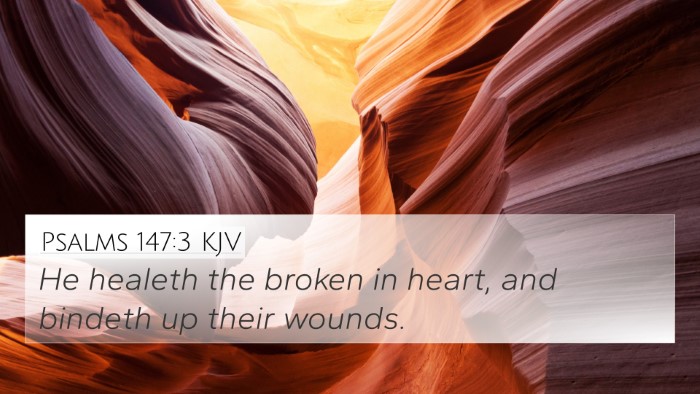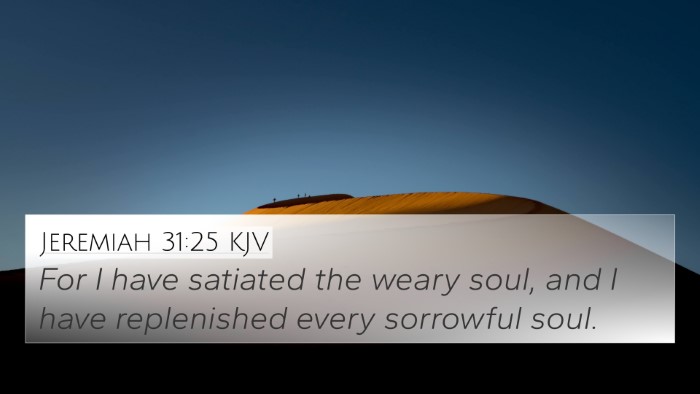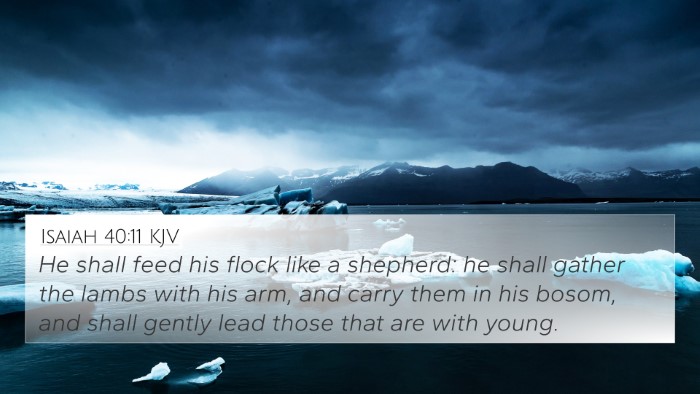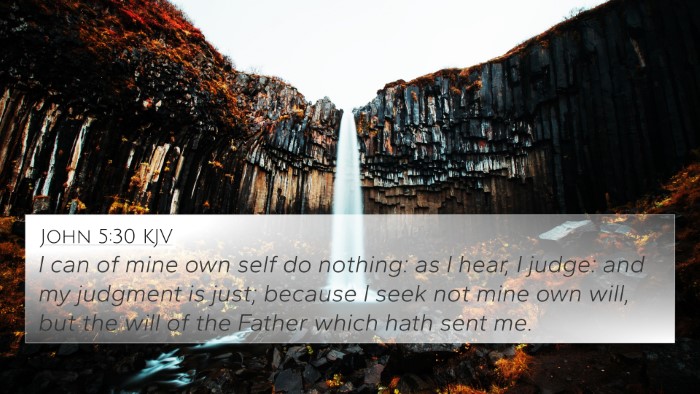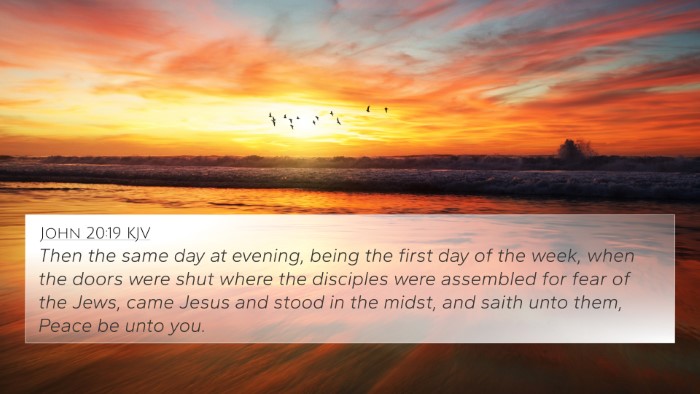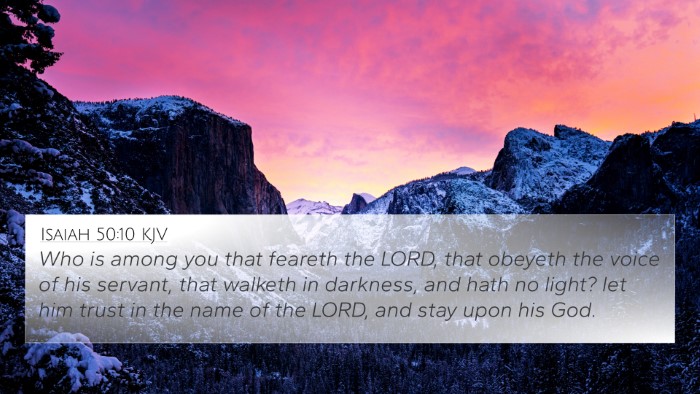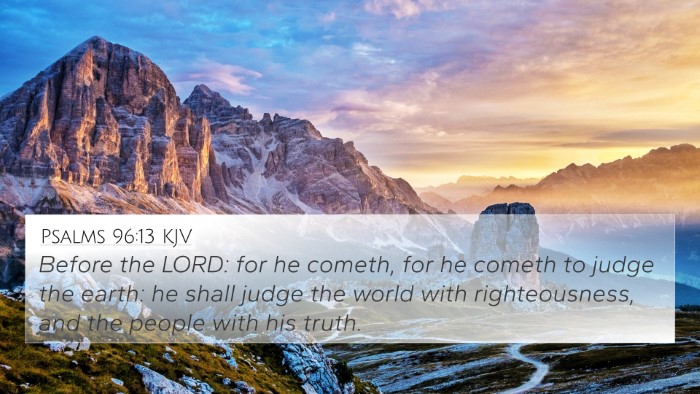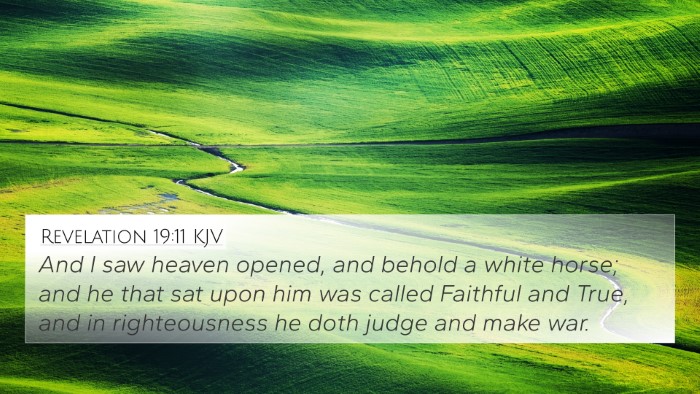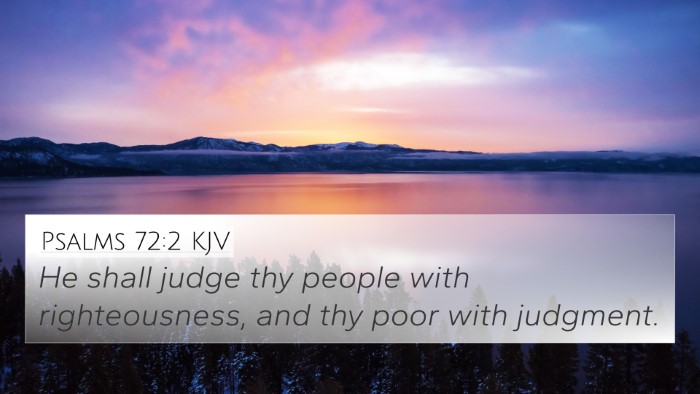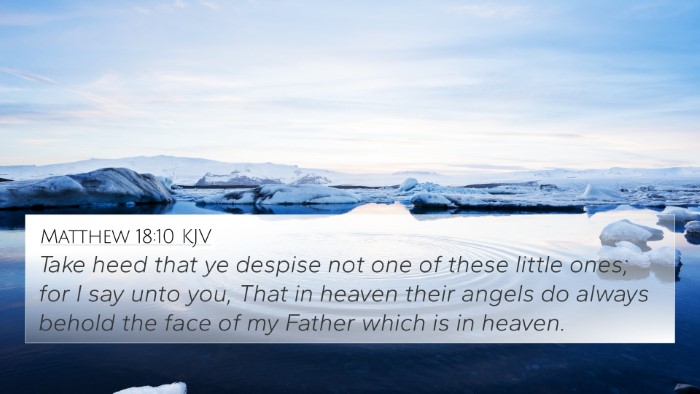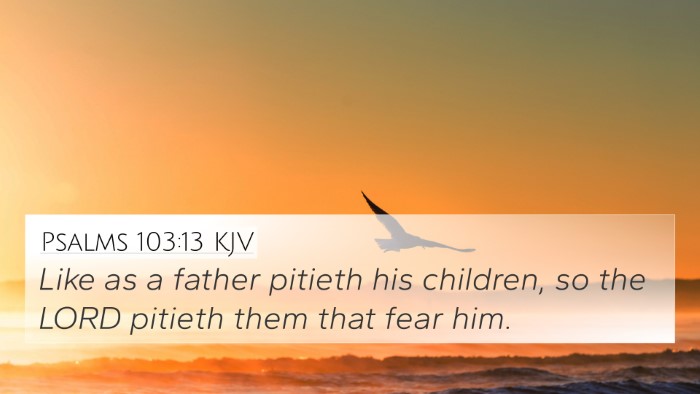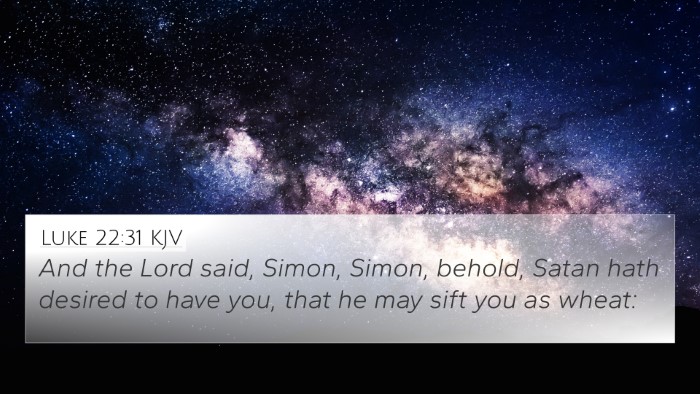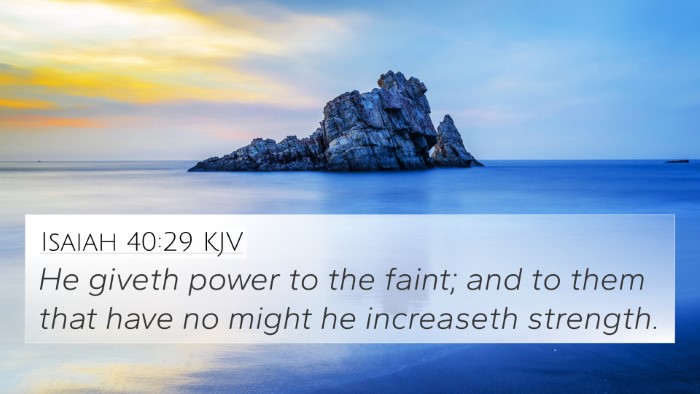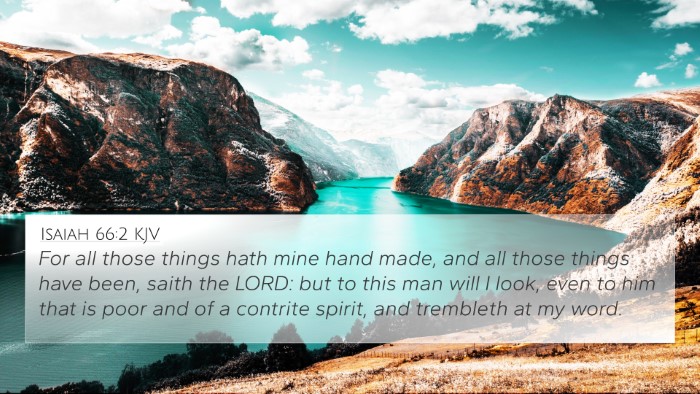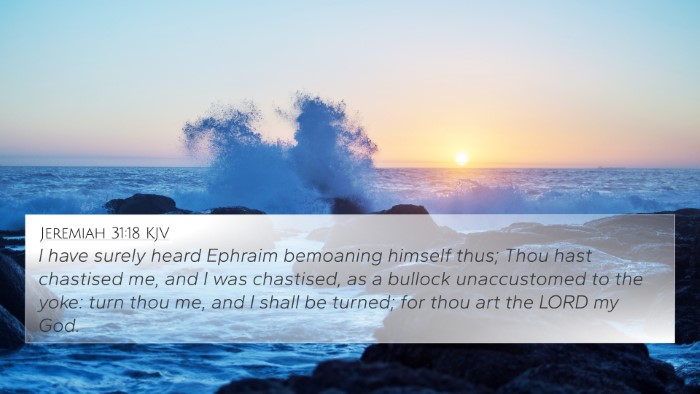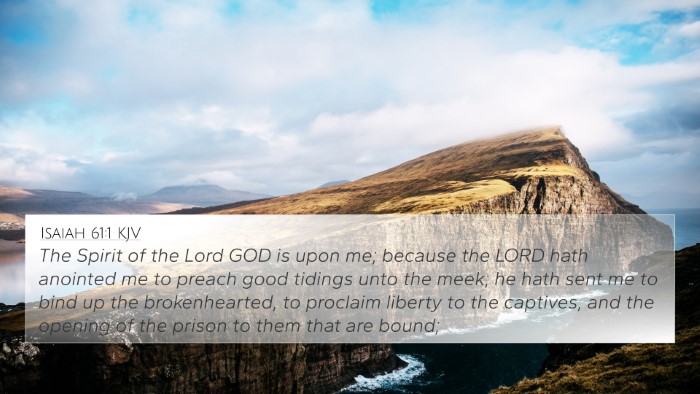Understanding Isaiah 42:3
Isaiah 42:3 states: "A bruised reed shall He not break, and the smoking flax shall He not quench: He shall bring forth judgment unto truth." This verse is rich with meaning and offers profound insights about the character of the Servant of the Lord, typically interpreted as a reference to Jesus Christ. Below is a detailed interpretation and thematic analysis gathered from public domain commentaries, including those by Matthew Henry, Albert Barnes, and Adam Clarke.
Exegesis and Thematic Analysis
At its core, Isaiah 42:3 communicates mercy, gentleness, and the establishment of justice. Let’s delve deeper into the specific meanings of its components:
1. "A bruised reed shall He not break"
Matthew Henry's Commentary: This phrase illustrates the Lord's tender care for the weak and downtrodden. The "bruised reed" symbolizes those who are fragile or struggling, emphasizing that God does not abandon those who are broken or hurt.
Albert Barnes' Notes: Barnes highlights that the reed, often used as a measuring tool, signifies those whose value may be diminished. God’s refusal to break the reed indicates His desire to restore rather than to destroy.
Adam Clarke's Commentary: Clarke states that the image of a bruised reed reveals God's forbearance. Unlike harsh judgment, God provides rehabilitation and hope to those in dire conditions.
2. "The smoking flax shall He not quench"
Insights from Matthew Henry: The smoking flax refers to a wick that has lost its flame but still holds potential. This indicates God's patience and the possibility of rekindling hope and faith.
Albert Barnes: He interprets this imagery to express God’s mission to ignite zeal and fervor in those who are faltering, symbolizing restoration rather than destruction.
Commentary by Adam Clarke: Clarke notes that turning smoking flax into a flame is a metaphor for spiritual revival, highlighting God’s desire to reignite fervency in His people.
3. "He shall bring forth judgment unto truth"
Matthew Henry's View: This closing phrase directs us to understand that justice upheld by God is rooted in truth. His verdicts are not based on appearance, but on righteousness.
Albert Barnes: Barnes points out that the judgment refers to the delivery of justice that will ultimately reveal God's nature and purpose, promoting genuine righteousness.
Insights from Adam Clarke: Clarke affirms that the assurance of God’s commitment to justice not only provides comfort but calls for a response of faithfulness from believers.
Cross-References
This verse connects deeply with various other scriptures. Below are notable cross-references that elaborate on the themes found within Isaiah 42:3:
- Matthew 12:20 - "A bruised reed shall He not break, and smoking flax shall He not quench." This New Testament reference directly quotes Isaiah, affirming Jesus's humble mission.
- John 6:37 - "All that the Father gives Me will come to Me, and whoever comes to Me I will never drive away." This verse reflects Jesus's gentle embrace of the broken and lost.
- Psalm 34:18 - "The Lord is close to the brokenhearted and saves those who are crushed in spirit." This reinforces the theme of God's compassion for the downtrodden.
- 2 Corinthians 1:3-4 - "Praise be to the God and Father of our Lord Jesus Christ, the Father of compassion and the God of all comfort..." This speaks to God's restorative nature.
- Lamentations 3:22-23 - "Because of the Lord's great love we are not consumed, for his compassions never fail. They are new every morning..." This illuminates God's unwavering mercy.
- Isaiah 61:1 - "The Spirit of the Sovereign Lord is on me, because the Lord has anointed me to proclaim good news to the poor..." This passage parallels the idea of bringing justice and healing.
- James 1:27 - "Religion that God our Father accepts as pure and faultless is this: to look after orphans and widows in their distress..." This reflects the heart of advocacy for the vulnerable.
Conclusion
Isaiah 42:3 encapsulates vital truths about the nature of God as compassionate, gentle, and just. The interconnectedness of this verse with others strengthens our understanding of God's overarching message throughout scripture. By linking biblical texts, we uncover themes of mercy, justice, and hope across both the Old and New Testaments. This comparative Bible verse analysis not only emphasizes God’s character but encourages believers to respond to His call to care for those who are weak and in need.
Tools for Bible Cross-Referencing
For anyone interested in exploring these connections further, various tools are available:
- Bible Concordance - A helpful resource for locating specific verses and themes.
- Bible Cross-Reference Guide - Useful for understanding relationships between scriptures.
- Cross-Reference Bible Study - Methods for applying verses to practical life and sermon preparation.
Learning More
To improve your understanding of how to utilize these cross-reference systems, consider studying themes across the Bible or the connections between the Prophets and Apostolic teachings. Engaging deeply with scripture will enhance your spiritual journey and equip you for effective ministry.

